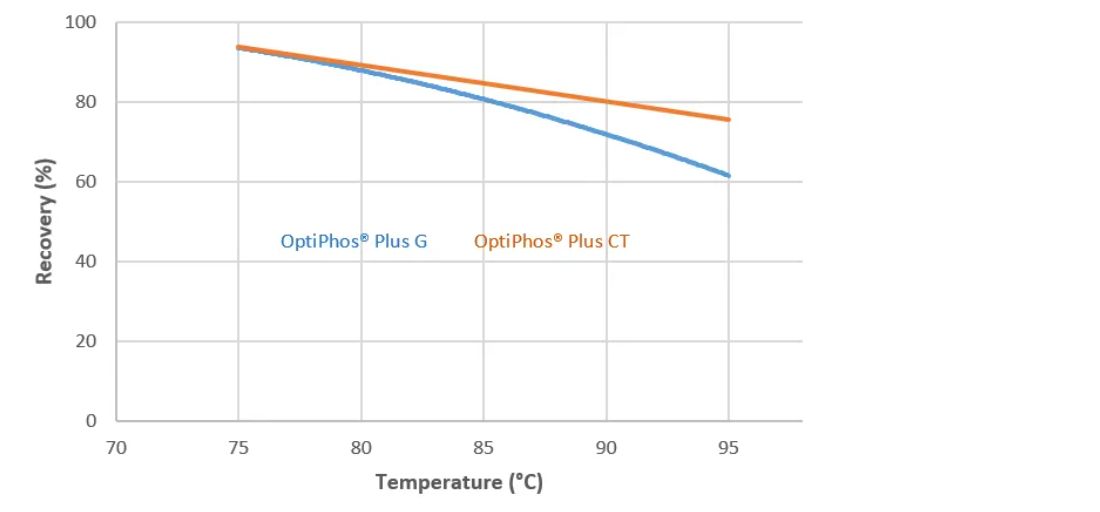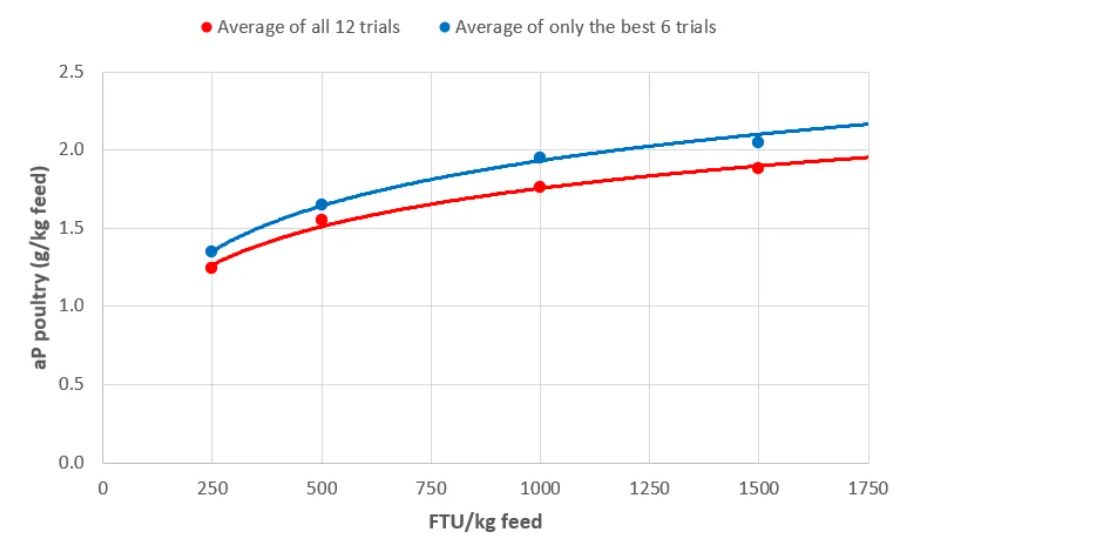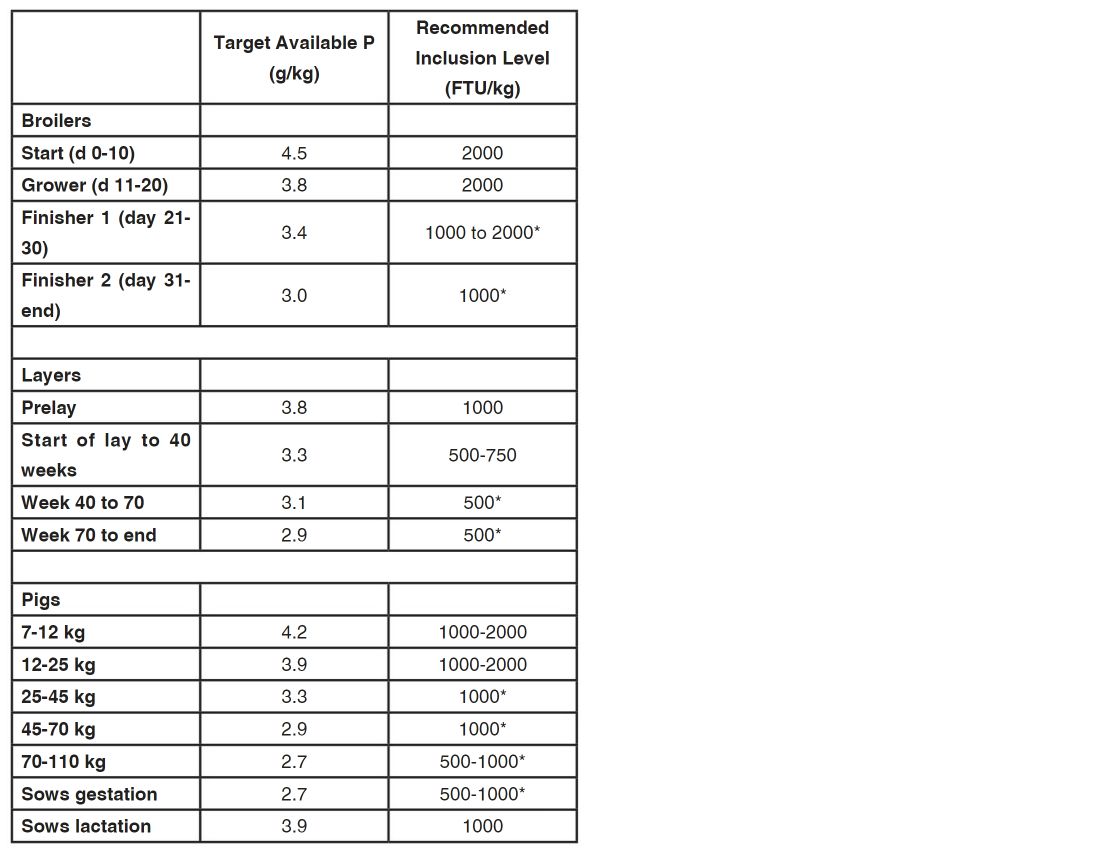Introduction
The application of phytases in feed is now common practice in monogastric nutrition as it lowers the feed cost (less inorganic phosphorus (P) in the feed). At the same time, the sustainability of animal production is improved as P excretion in the environment is reduced. In this respect, a tendency to lower the P level in feed combined with an increased inclusion level of phytase is observed. However, phytases need to be stable and well formulated in feed as a P level that is too low will lead to reduced bone growth and animal performance in general.
The two major reasons for P deficiency when using a phytase in feed are:
- A low heat stability of the phytase during pelleting, leading to lower than expected levels in feed
- An overestimation of its P matrix values, leading to a lower than expected P release from phytate
This is particularly required when considering removing all the inorganic P from the feed formulation.
Can we do without inorganic P in the feed?
The level of inclusion of inorganic P in feed depends on the P requirements imposed. As of 2 years ago, the prices of inorganic P increased sharply, causing a tendency to formulate diets closer to the animals' actual requirements for P, thus reducing the safety margin on P typically included in the feed formula. Combined with an increasing dose of phytase used, the inclusion of inorganic P sources was even further reduced, and led to feed formulations where all inorganic P sources were removed. As formulation on P is now on the limit, you need to rely on your phytase to be present in the feed (i.e., heat stable enough to survive the pelleting process) and that it does not overpromise its potency (i.e., the matrix values are reliable).
A heat stable phytase
To avoid the breakdown of the added phytase during pelleting, it is required that the phytase demonstrates a high thermostability until at least 85oC. An overview of the average recovery of the novel, intrinsically heat stable phytase, OptiPhos® Plus, determined in over 20 pelleting studies conducted in the EU and in the USA, is shown in Figure 1. As the universal definition of stability stipulates that "stability is achieved when recovery of the active substance is above 80% of the original value", it can be seen that OptiPhos Plus can claim an intrinsic heat stability at 85oC when applied in the granular form (G). When a coated version (CT) is used, a stability up to 95oC is observed.

A phytase with reliable P matrix values
The P matrix values provide information to a nutritionist about how must inorganic P can be replaced by the incorporation of the phytase into the feed. To provide reliable matrix values, multiple trials need to be conducted as there is a high variation between trials on the response of P release by a phytase. To have reliable matrix values, all trials should be considered as they reflect real practice in the field.
For instance in broilers, only using the best trial data will give higher available P (aP) values, compared to when using all the trial data (Figure 2).

The response at 1000 FTU/kg in poultry, for example, provides an aP matrix value of 1.76 g aP/kg of feed when considering all trials, but 1.95 g aP/kg of feed when only considering the best trials. In the latter case, a feed cost saving of €0.30 - 0.40 per tonne of feed can be calculated. However, this increases the risk that P deficiency issues might occur, leading to lower animal performance, which will surely have a negative financial impact that is higher than the cost savings per tonne of feed. Therefore, it is better to rely on the average P matrix values of all conducted trials, and not just rely on the best ones.
Recommendations
Table 1 gives an overview of target available P levels and of the recommended doses of OptiPhos Plus and at which inclusion levels the feed no longer contains inorganic P considering the target aP levels imposed. As can be observed from this table, feed formulations without any inorganic P can be safely produced when applying the correct phytase dose.

Conclusion
Feed free of inorganic P sources can be formulated when formulating with P closer to the real animal requirements and increasing the level of phytase included in the diet. However, an excellent recovery of phytase in pelleted feeds needs to be guaranteed, combined with reliable and safe P matrix values originating from multiple trials, in order to avoid any risk of P deficiency, and as a consequence, financial losses.



